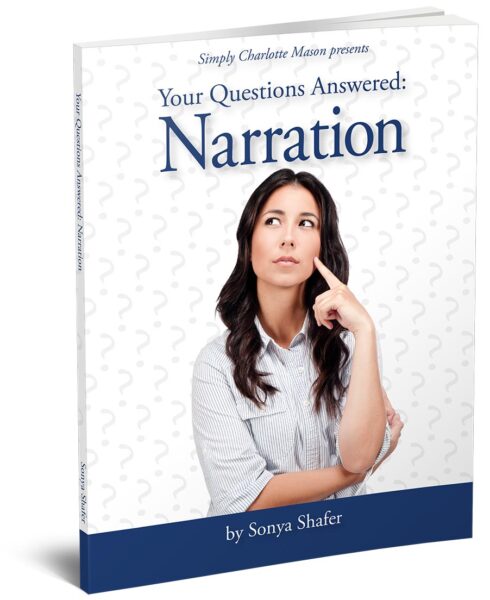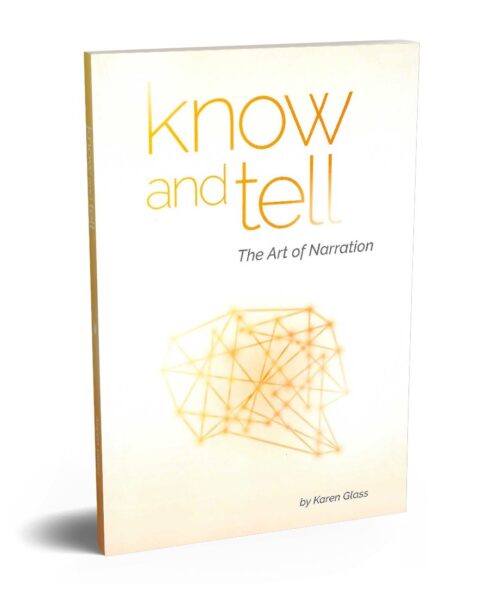Free shipping on USA orders over $129!
Narration is such a wonderful method for learning: read or listen to a passage from a living book and then retell that passage in your own words. That skill sets your student up for self-educating her entire life. But it gets even better. That skill also prepares your student for written composition, because at some point, your student will be ready to take the next step in narrating and transition to writing her narrations. It’s an important milestone. So let’s talk about how to start written narration.
How to Start Written Narration
I find it enlightening that Charlotte Mason referred to oral narration as “oral composition.” When you think about it, that’s exactly what it is! When you are given the assignment to write a composition, do you immediately start writing? No. First you do a lot of mental work: you review what you know about the topic; you determine what points you want to cover and in what order; you sometimes mix in your own opinion on a certain aspect of that topic; and then you try to hold onto those thoughts, put them together into coherent sentences, and, finally, write them down.
That’s a lot of mental work before the pencil ever touches the paper. And Charlotte Mason recognized that important mental work. But at the same time, she recognized that young students would hit an additional mountain of mental work once the pencil did touch the paper. Students in grades 1–3 usually have to concentrate on how to form the letters they are writing, when to put in a capital letter or a period or a question mark, plus, they are still learning how to spell most of the words they are writing. Charlotte realized that if the student turned the focus of her mind onto those mechanics, the mental process of working with the knowledge itself—the narrating and making personal relations with that knowledge—would suffer.
When you are given the assignment to write a composition, you don’t immediately start writing.
So in grades 1–3, we keep the mental process but remove the written challenge from narration. Those early elementary students focus on oral narration, or “oral composition.” Then once the student is confident with handwriting, is reading at about a fourth-grade level, and has become comfortable and fluent in oral narration, you can take the next step and introduce written narration. That transition usually begins when the student is ten years old, or about fourth grade.
Keep in mind that important word: “transition.” This is a process. When your student hits fourth grade, you start to gradually require some written narration. And as she grows and enters higher grade levels, the requirement can gradually grow with her—just as with so many of Charlotte’s methods.
How Many Written Narrations?
Let me show you how I like to make that gradual transition. It seems to work well to require
1 written narration per week in 4th grade
2 written narrations per week in 5th and 6th grades
3 written narrations per week in 7th and 8th grades
4 written narrations per week in 9th and 10th grades
5 written narrations per week in 11th and 12th grades
Oral narration continues through all the grades, even as the number of written narrations increases.
That doesn’t mean that your student is doing only those written narrations, though. You still require oral narrations for the rest of your narration lessons during the week. Oral narration continues through all the grades, even as the number of written narrations increases. Keep giving your student practice in that mental process even for the lessons when she is not writing them down. She’s still required to narrate, but now you can sometimes ask for oral narration and sometimes for written narration.
Tips for Making It Easier
Don’t be surprised if it takes a little time for your student to find her feet with written narration. It can be difficult to capture your thoughts and get them onto paper. Sometimes, your student might have beautiful, flowing oral narrations, but then when you ask her to write one, you get just a couple of stilted sentences. That’s quite normal during this transition time. Be patient. Give grace.
One thing you can do, if your student gets writer’s block looking at a sheet of blank paper, is to have her start narrating orally, as she is used to, and you write down what she is saying. Then when she is almost to the end—remember, you’ve been listening to her narrate orally for quite some time and you probably have a pretty good feel for when she’s winding down—so when she’s just a sentence or two from the end, stop writing and hand the paper to her. Tell her to just finish it up. Well, chances are that she already knows what she wants to say; she’s probably just waiting for you to catch up. So adding the final sentence or two won’t seem as intimidating. Then as you continue to practice over the weeks, and she gets more comfortable, you can stop your part of the writing sooner and sooner, and increase the part that she writes little by little, until eventually, she’s writing the whole thing.
Consider all written narrations as rough drafts.
Let me give you one more word of advice about written narration: consider all written narrations as rough drafts. They are not polished compositions. And it is not your job to get out your red pen and bleed all over them. Your student will be learning the mechanics of spelling, punctuation, capitalization, and grammar through her dictation and grammar lessons over the years, and you will most likely see growth in those areas over time. But don’t expect your student’s written narrations to be polished compositions. Once your student hits the high school years, you can help her select one draft per week and work together to edit and polish and turn it into a finished composition. But in the meantime, in grades 4–8, give your student plenty of opportunity and encouragement to just capture her thoughts and get them onto paper.
That’s written narration.
Great Narration Resources
We have two resources that will help you with making the transition to written narration.


Your Questions Answered: Narration gives you lots of practical help in all aspects of narrating, both oral and written.


The book Know and Tell goes more in-depth on how to work with your high school student to turn her written narrations into compositions.
Podcast: Play in new window | Download
Podcast (podcastv): Play in new window | Download
